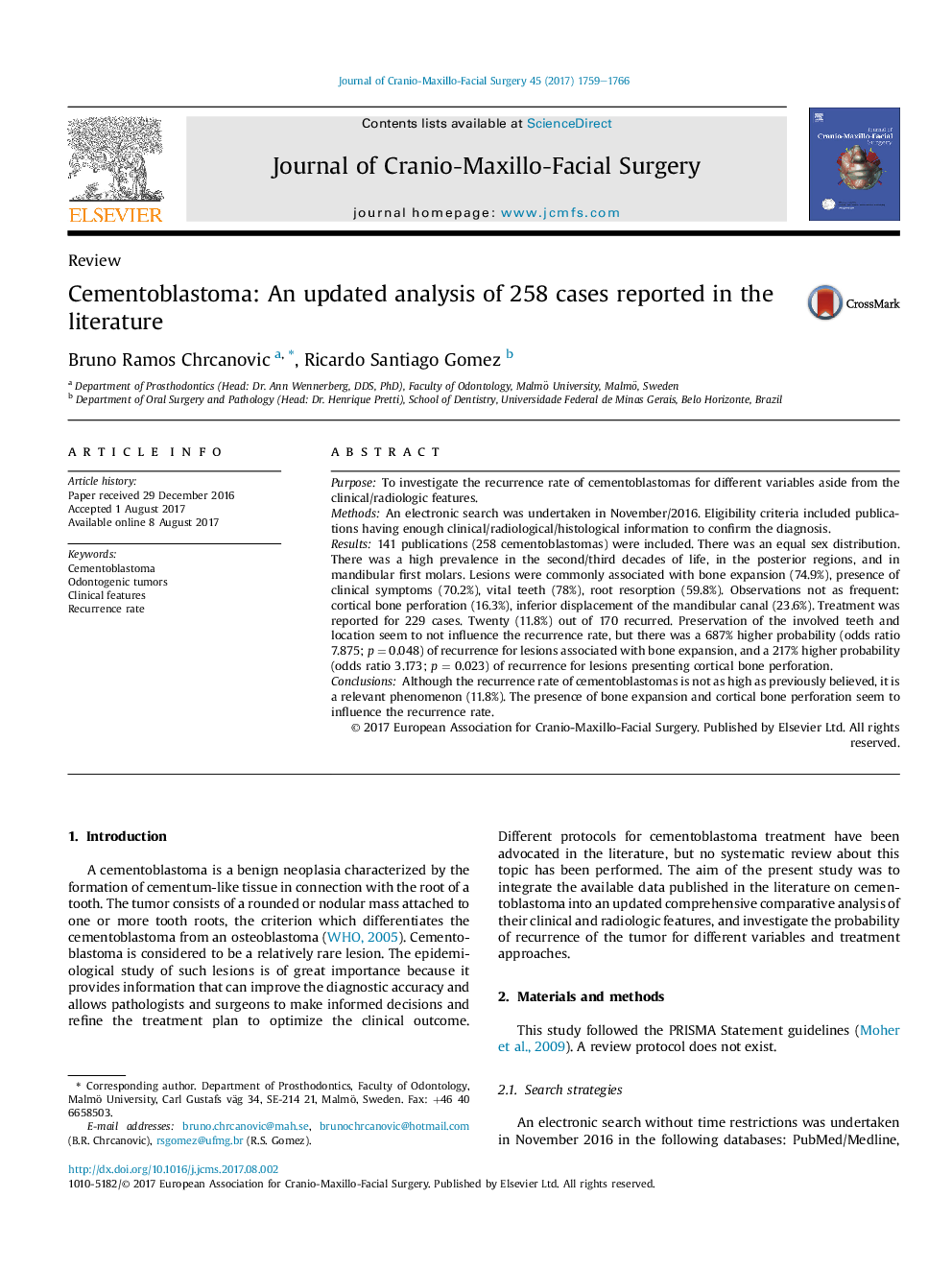| Article ID | Journal | Published Year | Pages | File Type |
|---|---|---|---|---|
| 5640008 | Journal of Cranio-Maxillofacial Surgery | 2017 | 8 Pages |
â¢Review of series of cementoblastomas in the literature: 258 lesions.â¢Association: bone expansion, clinical symptoms, vital teeth, root resorption.â¢High prevalence: 2nd/3rd decades, mandibular first molar.â¢Preservation involved teeth/lesion location: no influence on recurrence.â¢Bone expansion and cortical bone perforation influenced the recurrence rate.
PurposeTo investigate the recurrence rate of cementoblastomas for different variables aside from the clinical/radiologic features.MethodsAn electronic search was undertaken in November/2016. Eligibility criteria included publications having enough clinical/radiological/histological information to confirm the diagnosis.Results141 publications (258 cementoblastomas) were included. There was an equal sex distribution. There was a high prevalence in the second/third decades of life, in the posterior regions, and in mandibular first molars. Lesions were commonly associated with bone expansion (74.9%), presence of clinical symptoms (70.2%), vital teeth (78%), root resorption (59.8%). Observations not as frequent: cortical bone perforation (16.3%), inferior displacement of the mandibular canal (23.6%). Treatment was reported for 229 cases. Twenty (11.8%) out of 170 recurred. Preservation of the involved teeth and location seem to not influence the recurrence rate, but there was a 687% higher probability (odds ratio 7.875; p = 0.048) of recurrence for lesions associated with bone expansion, and a 217% higher probability (odds ratio 3.173; p = 0.023) of recurrence for lesions presenting cortical bone perforation.ConclusionsAlthough the recurrence rate of cementoblastomas is not as high as previously believed, it is a relevant phenomenon (11.8%). The presence of bone expansion and cortical bone perforation seem to influence the recurrence rate.
